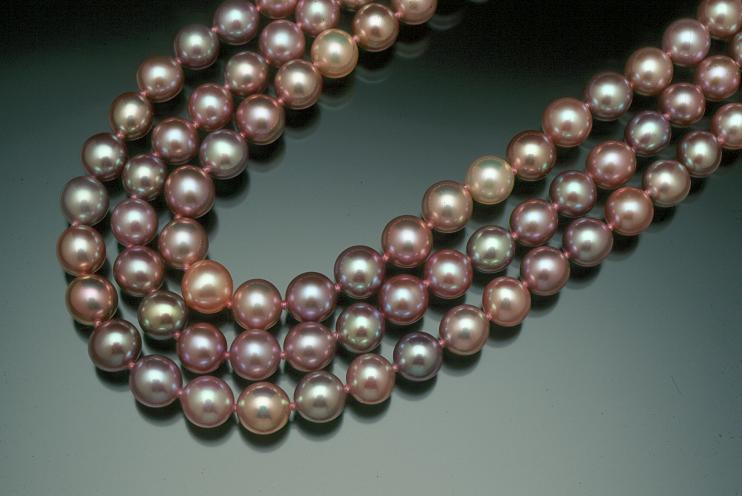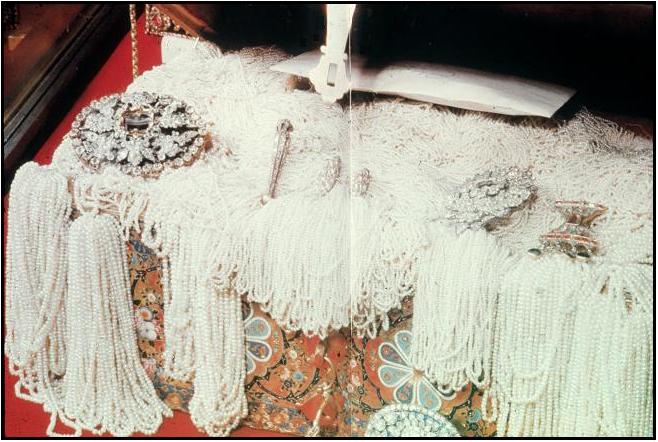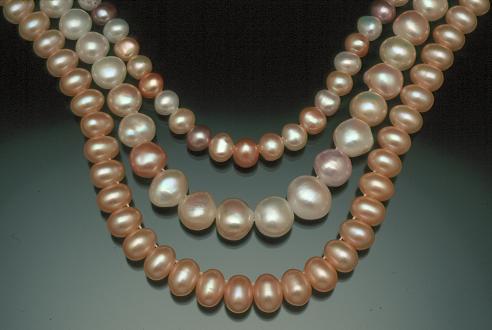(Singular nouns: Fr-perle; Ger-Perle; Nor-perle; Rus- перл / жемчуг)
A. Pearl. Source of this pearl,
apparently cultured, was not divulged (diameter
- 8.5 mm). Commercial Mining. (© photo by
Jeffrey A. Scovil)

B. Pearls. Three strands of diversely
colored, but well sized cultured pearls. M. Freeman. (© photo by
Jeffrey A. Scovil)
C. Pearls. This French Polynesia stamp (66 francs, dated 14 June 1995) features two black pearls from Tahiti. (© photo of stamp by Richard Busch, reproduced by permission http://mineralstamps.rbnet.net)

